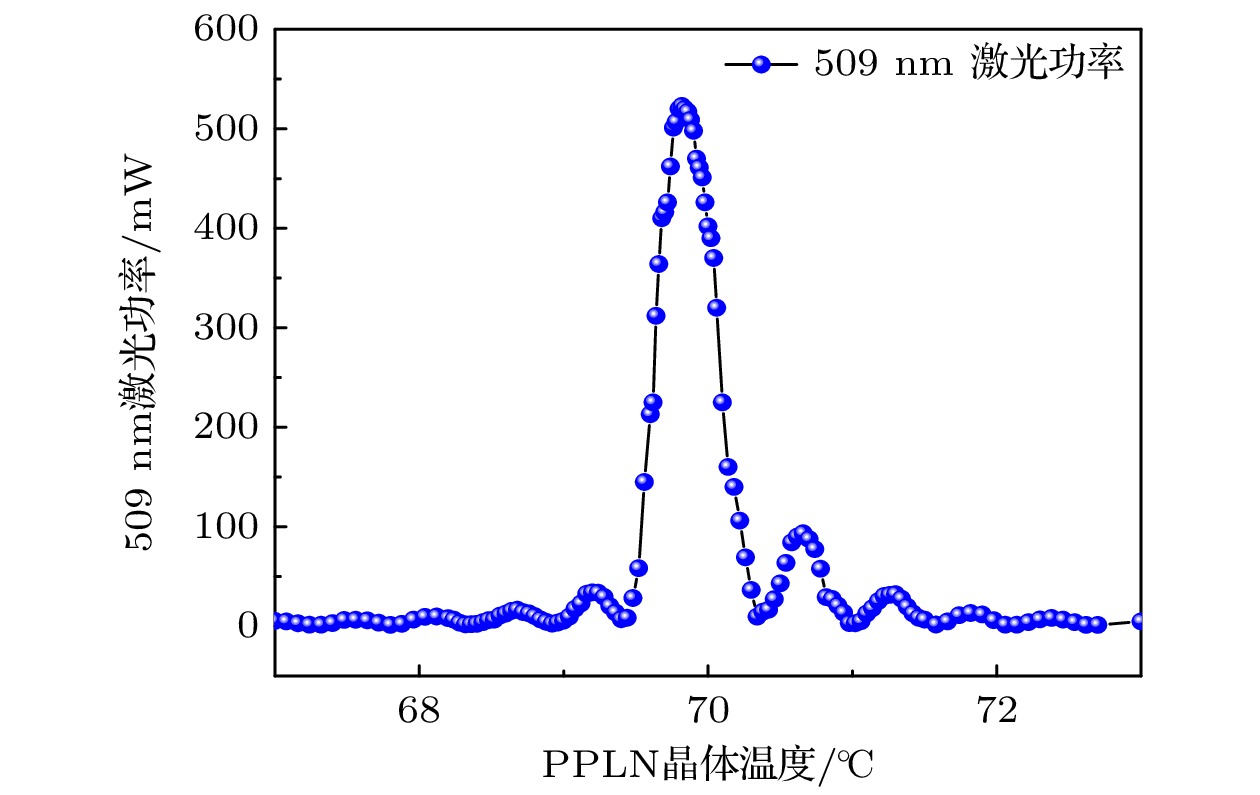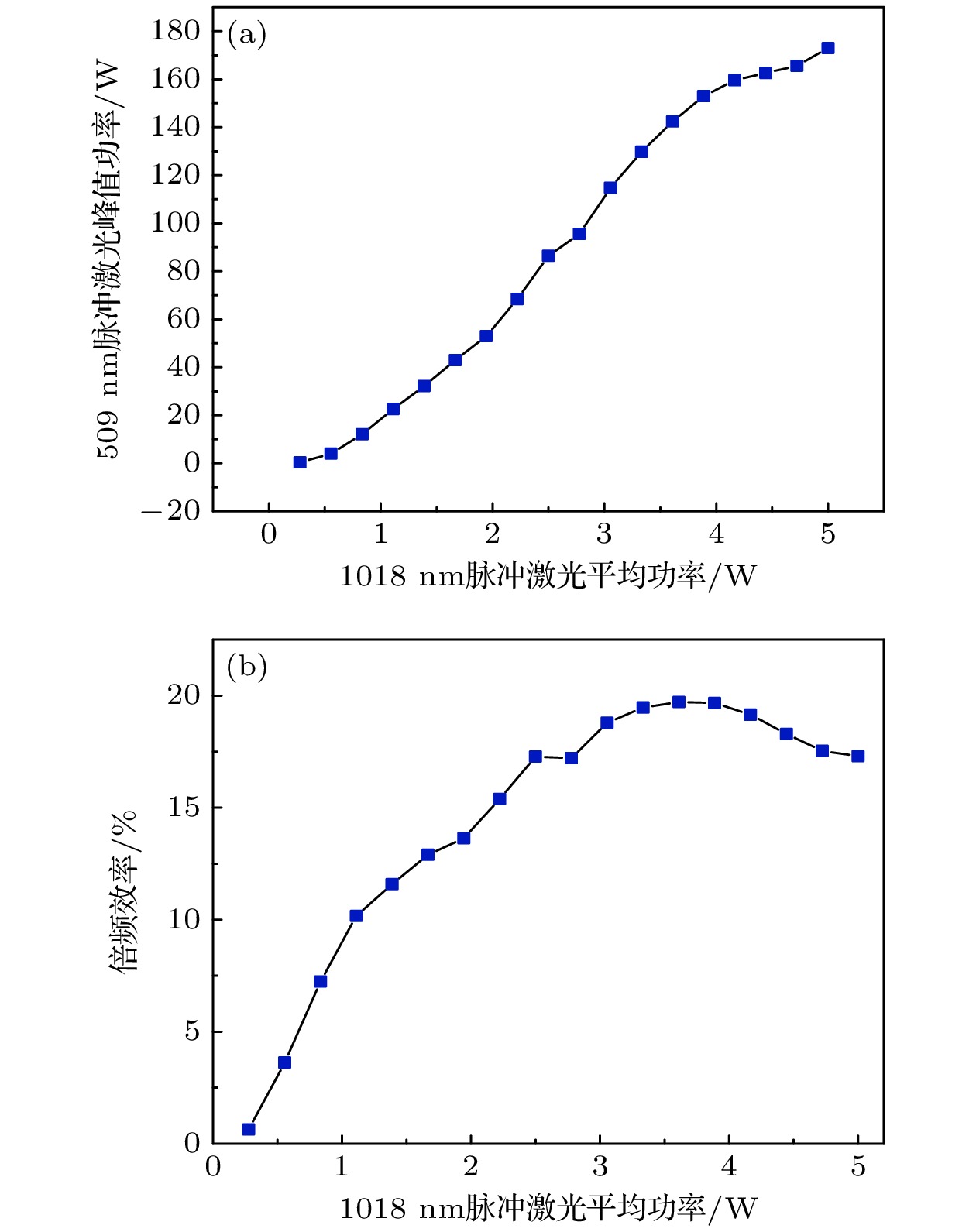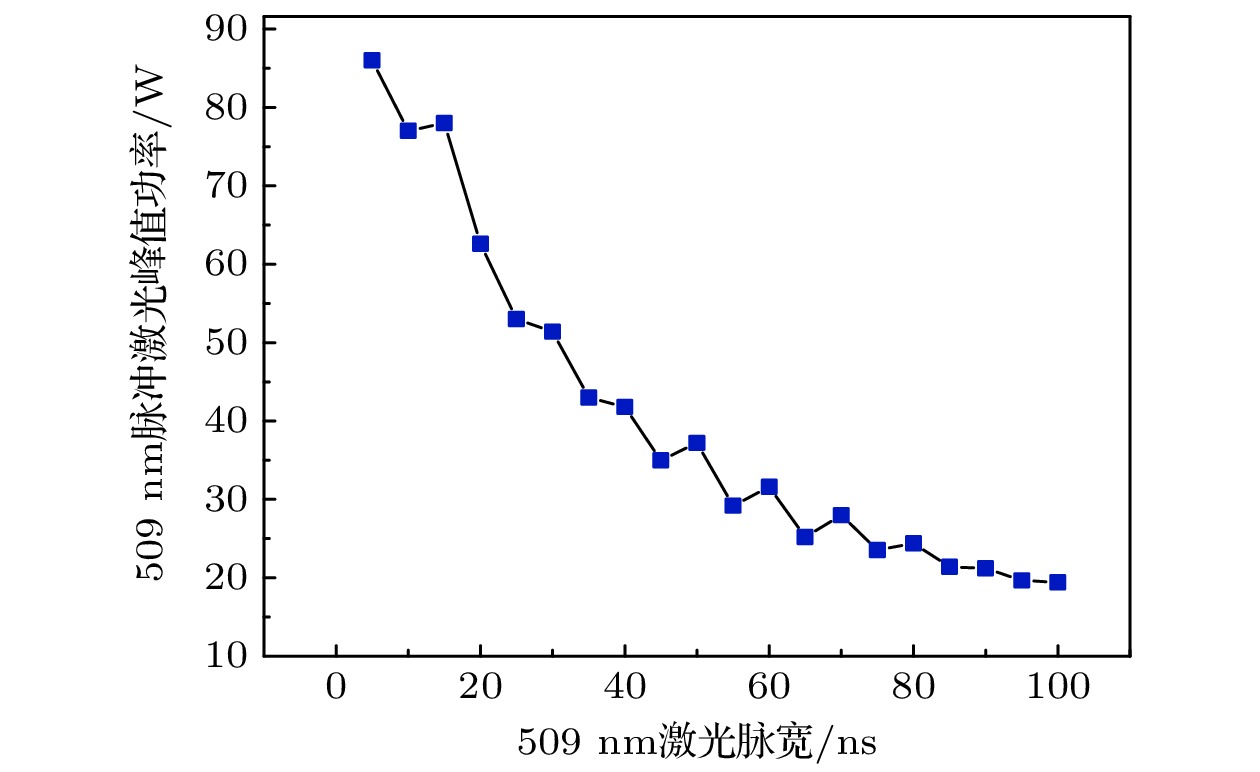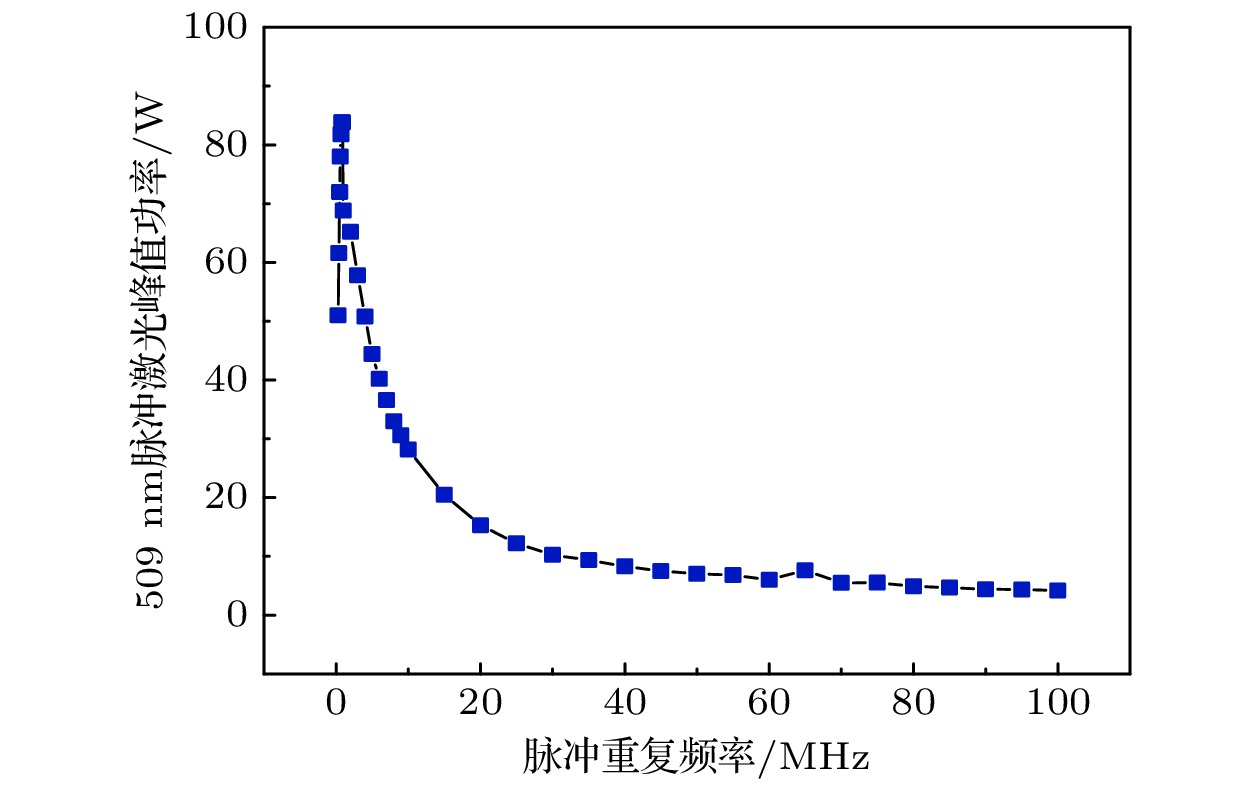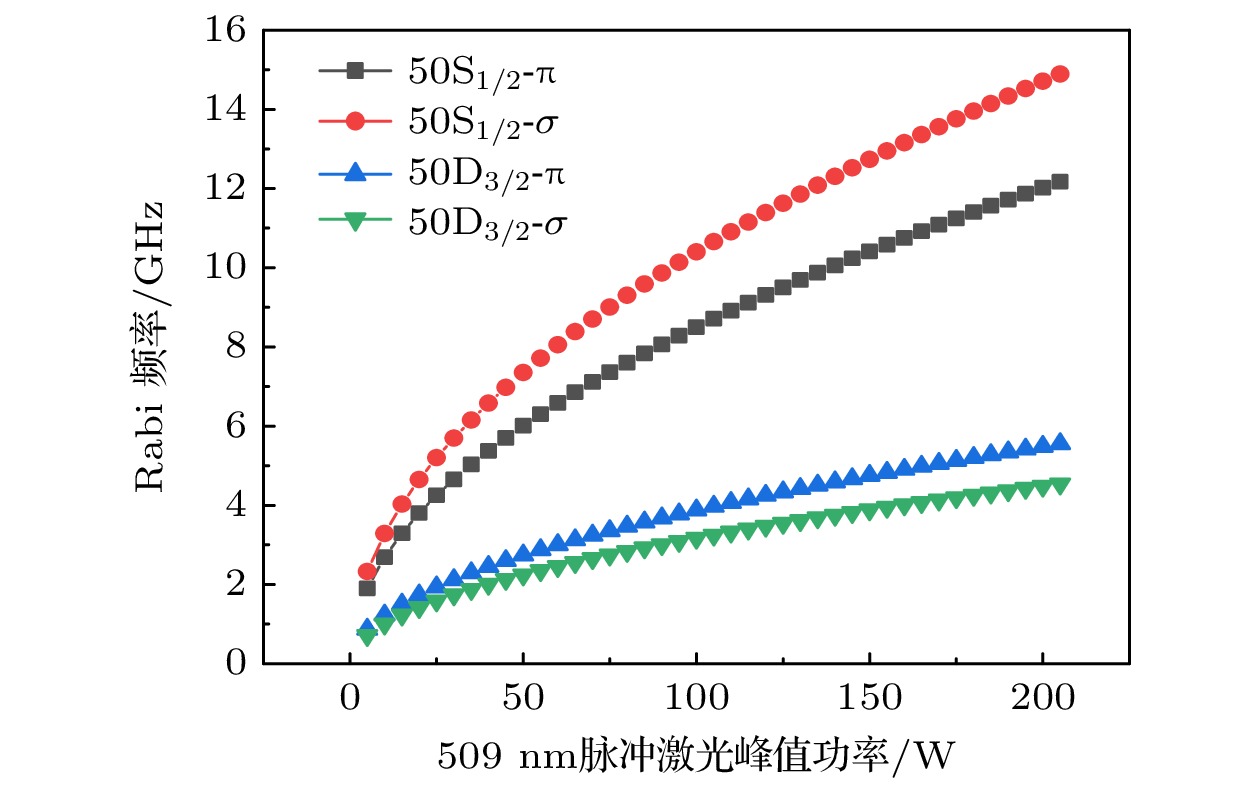-
Single photon source is a non-classical light field with anti-bunching effect, which has a potential applications in the research of fundamental physics problems, quantum precision measurement, quantum communication, quantum computing, etc. The strong interaction between highly excited Rydberg atoms presents an excitation blockade effect. In a dense Rydberg atomic ensemble, the excitation of more than one Rydberg atom within a blockade volume is suppressed, where the interactions of Rydberg atoms shift the atomic states out of resonance with an excitation laser. We consider here the generation of single photon source by using a four-wave mixing scheme in a room-temperature atomic vapor cell. In a homemade micrometer-sized atomic vapor cell, one-dimensional size is smaller than the radius of Rydberg blockade and the other two-dimensional size is limited by the size of focused laser beam. The blockade radius is on the order of a few micrometers, depending on the Rydberg atom states. An excitation blockade effect can be used to realize single photon source in thermal cesium vapor microcells. The micron cesium-cell is used to spatially localize atomic groups, which results in the atomic decoherence time on the order of microseconds or even nanoseconds. This requires a high-power pulsed laser to prepare the Rydberg atomic state at a nanosecond scale. Four-photon excitation schemes with narrow linewidth lasers are also used experimentally. The cesium-Rydberg state can usually be excited by the lasers with optical wavelengths 852 and 509 nm, respectively. The laser system is well-stabilized so that the detuning is small compared with the spontaneous linewidth of Rydberg state, while the laser power and temporal mode need to be specified for ns-time coherence in thermal cesium vapor microcells. The 852 nm laser can be achieved by modulating the continuous laser beam with the help of an electro-optic intensity modulator (EOIM). While this remains a technical challenge for 509 nm laser with ns-laser pulse. There is no EOIM to generate the ns-laser pulse with high power. We demonstrate a novel generation method of 509 nm laser system. In our experiments, a 1018 nm fiber laser is used to produce a continuous laser with a typical linewidth of ~8 kHz and power of 10 mW. The nanosecond pulse is generated with the help of an electro-optic intensity modulator (EOIM) by modifying the continuous laser beam. The peak power of modulated optical pulse is amplified to 4600 W by using a homemade fiber amplifier. The output beam of 1018 nm is then injected into a periodically poled lithium-niobate (PPLN) to generate the second harmonics laser of 509 nm. The typical peak power of 509 nm reaches 173 W by optimizing PPLN phase matching parameters. The pulse repetition frequency of the 509 nm laser can be continuously tuned in a range of 300 kHz–100 MHz, and the pulse width can be continuously tuned in a range of 1–100 ns. Peak power fluctuation of the pulses is about 1.3%. The power 509 nm laser with optimized pulse parameters can be used to excite the cesium atom with GHz bandwidth. Meanwhile the two seed source lasers is well established experimentally, which allows alternating pulses with a different wavelength. This is an essential capability for realizing a single photon source through four-wave mixing. -
Keywords:
- Rydberg atom /
- pulse laser /
- nonlinear frequency conversion /
- single photon source
[1] Kimble H J, Dagenais M, Mandel L 1977 Phys. Rev. Lett. 39 691
 Google Scholar
Google Scholar
[2] Hessmo B, Usachev P, Heydari H, Björk G 2004 Phys. Rev. Lett. 92 180401
 Google Scholar
Google Scholar
[3] Lombardi E, Sciarrino F, Popescu S, Martini F D 2002 Phys. Rev. Lett. 88 070402
 Google Scholar
Google Scholar
[4] Gisin N, Ribordy G, Tittel W, Zbinden H 2002 Rev. Mod. Phys. 74 145
 Google Scholar
Google Scholar
[5] Weber J R, Koehl W F, Varley J B, Janotti A, Buckley B B, Van de Walle C G, Awschalom D D 2010 Proc. Natl. Acad. Sci. 107 8513
 Google Scholar
Google Scholar
[6] Knill E, Laflamme R, Milburn G J 2001 Nature 409 46
 Google Scholar
Google Scholar
[7] Kok P, Munro W J, Nemoto K, Ralph T C, Dowling J P, Milburn G J 2007 Rev. Mod. Phys. 79 135
 Google Scholar
Google Scholar
[8] Michler P, Imamoğlu A, Mason M D, Carson P J, Strouse G F, Buratto S K 2000 Nature 406 968
 Google Scholar
Google Scholar
[9] Santori C, Pelton M, Solomon G, Dale Y, Yamamoto Y 2001 Phys. Rev. Lett. 86 1502
 Google Scholar
Google Scholar
[10] Klyshko D N, Sviridov Y 2018 Photons and Nonlinear Optics (London: Routledge)
[11] Ramelow S, Mech A, Giustina M, Gröblacher S, Wieczorek W, Beyer J, Lita A, Calkins B, Gerrits T, Nam S W, Zeilinger A, Ursin R 2013 Opt. Express 21 6707
 Google Scholar
Google Scholar
[12] Ripka F, Kübler H, Löw R, Pfau T 2018 Science 362 446
 Google Scholar
Google Scholar
[13] Dudin Y O, Kuzmich A 2012 Science 336 887
 Google Scholar
Google Scholar
[14] Kölle A, Epple G, Kübler H, Löw R, Pfau T 2012 Phys. Rev. A 85 063821
 Google Scholar
Google Scholar
[15] Huber B, Kölle A, Pfau T 2014 Phys. Rev. A 90 053806
 Google Scholar
Google Scholar
[16] Ripka F, Chen Y H, Löw R, Pfau T 2016 Phys. Rev. A 93 053429
 Google Scholar
Google Scholar
[17] Jin G, Liu B, He J, Wang J M 2016 Appl. Phys. Express 9 072702
 Google Scholar
Google Scholar
[18] He J, Jin G, Liu B, Wang J M 2016 Opt. Lett. 41 5724
 Google Scholar
Google Scholar
[19] de Vries O, Plötner M, Christaller F, Zhang H, Belz A, Heinrich B, Kübler H, Löw R, Pfau T, Walbaum T, Schreiber T, Tünnermann A 2020 Opt. Express 28 17362
 Google Scholar
Google Scholar
[20] Poem E, Golenchenko A, Davidson O, Arenfrid O, Finkelstein R, Firstenberg O 2020 Opt. Express 28 32738
 Google Scholar
Google Scholar
-
图 1 基于铯原子四波混频的单光子源能级结构示意图. 两个频差GHz的509 nm脉冲激光用于实现四波混频过程的里德伯态激发
Figure 1. Schematic diagram of single-photon source energy level structure based on four-wave mixing of cesium atoms. Two 509 nm pulsed lasers with a frequency difference of GHz are used to achieve Rydberg state excitation in a four-wave mixing process.
图 2 脉冲激光器示意图. 种子源激光为连续输出的光纤激光器, 输出激光经电光强度调制器 EOIM 1或EOIM 2产生纳秒脉冲激光, 脉冲激光输入光纤放大器PA进行功率放大, 放大后激光输入PPLN晶体进行倍频(SHG), 获得509 nm脉冲激光. Laser 1017.5 nm, Laser 1017.8 nm分别为种子源1和种子源2; EOIM 1和EOIM 2分别为Mach-Zehnder型电光强度调制器; PA为掺镱保偏光纤放大器; SHG为倍频器; Monitor 1, Monitor 2分别为两个种子源的监测端口; Monitor 3为EOIM输出的激光参数监测端口
Figure 2. Schematic diagram of pulsed laser. The seed source laser is a fiber laser with continuous output. The output laser generates nanosecond pulse laser through the electro-optical intensity modulator EOIM 1 or EOIM 2. The pulse laser is input into the fiber amplifier PA for power amplification. Laser 1017.5 nm and Laser 1017.8 nm are seed sources 1 and 2, respectively. EOIM 1 and EOIM 2 are Mach-Zehnder electro-optical intensity modulators, respectively. PA, ytterbium-doped polarization-maintaining fiber amplifier; SHG, frequency multiplier. Monitor 1 and Monitor 2 are monitoring ports for the two seed sources respectively. Monitor 3 is the port that monitors laser parameters output by EOIM.
图 3 电脉冲和光脉冲实验测量信号 (a) 光脉冲信号; (b) 电脉冲信号, 重复频率1 MHz、脉宽10 ns. 光脉冲重复频率与脉冲宽度是与电脉冲信号一致, 其中, 脉冲峰值功率起伏约1.3%
Figure 3. Experimental measurement signal of electrical pulse and optical pulse: (a) Optical pulse signal; (b) electrical pulse signal, the pulse repetition frequency is 1 MHz, the pulse width is 10 ns. The optical pulse repetition frequency and pulse width are consistent with the electrical pulse signal, in which the peak pulse power fluctuates about 1.3%.
图 4 509 nm脉冲激光的倍频温度匹配曲线, 在重复频率1 MHz、脉宽为5 ns参数条件下, 最佳匹配温度为69.82 ℃, 倍频转换效率为16%
Figure 4. Matching curve of frequency doubling temperature of 509 nm pulsed laser. Under the conditions of pulse repetition frequency of 1 MHz and pulse width of 5 ns, the optimal matching temperature is 69.82 ℃, and the conversion efficiency of frequency doubling is 16%.
图 6 509 nm脉冲序列图 (a) 509 nm和(b) 1018 nm光脉冲信号; (c) EOIM电脉冲信号; 插图为典型脉冲的放大显示, 典型重复频率1 MHz、脉宽10 ns. 光脉冲重复频率与脉冲宽度是与电脉冲信号一致
Figure 6. The 509 nm pulse sequence: (a) 509 nm optical pulse signal; (b) 1018 nm optical pulse signal; (c) EOIM electrical pulse signal; the inset is typical pulse amplification display. Typical pulse repetition frequency is 1 MHz, pulse width is 10 ns. The optical pulse repetition frequency and pulse width are consistent with the electrical pulse signal.
-
[1] Kimble H J, Dagenais M, Mandel L 1977 Phys. Rev. Lett. 39 691
 Google Scholar
Google Scholar
[2] Hessmo B, Usachev P, Heydari H, Björk G 2004 Phys. Rev. Lett. 92 180401
 Google Scholar
Google Scholar
[3] Lombardi E, Sciarrino F, Popescu S, Martini F D 2002 Phys. Rev. Lett. 88 070402
 Google Scholar
Google Scholar
[4] Gisin N, Ribordy G, Tittel W, Zbinden H 2002 Rev. Mod. Phys. 74 145
 Google Scholar
Google Scholar
[5] Weber J R, Koehl W F, Varley J B, Janotti A, Buckley B B, Van de Walle C G, Awschalom D D 2010 Proc. Natl. Acad. Sci. 107 8513
 Google Scholar
Google Scholar
[6] Knill E, Laflamme R, Milburn G J 2001 Nature 409 46
 Google Scholar
Google Scholar
[7] Kok P, Munro W J, Nemoto K, Ralph T C, Dowling J P, Milburn G J 2007 Rev. Mod. Phys. 79 135
 Google Scholar
Google Scholar
[8] Michler P, Imamoğlu A, Mason M D, Carson P J, Strouse G F, Buratto S K 2000 Nature 406 968
 Google Scholar
Google Scholar
[9] Santori C, Pelton M, Solomon G, Dale Y, Yamamoto Y 2001 Phys. Rev. Lett. 86 1502
 Google Scholar
Google Scholar
[10] Klyshko D N, Sviridov Y 2018 Photons and Nonlinear Optics (London: Routledge)
[11] Ramelow S, Mech A, Giustina M, Gröblacher S, Wieczorek W, Beyer J, Lita A, Calkins B, Gerrits T, Nam S W, Zeilinger A, Ursin R 2013 Opt. Express 21 6707
 Google Scholar
Google Scholar
[12] Ripka F, Kübler H, Löw R, Pfau T 2018 Science 362 446
 Google Scholar
Google Scholar
[13] Dudin Y O, Kuzmich A 2012 Science 336 887
 Google Scholar
Google Scholar
[14] Kölle A, Epple G, Kübler H, Löw R, Pfau T 2012 Phys. Rev. A 85 063821
 Google Scholar
Google Scholar
[15] Huber B, Kölle A, Pfau T 2014 Phys. Rev. A 90 053806
 Google Scholar
Google Scholar
[16] Ripka F, Chen Y H, Löw R, Pfau T 2016 Phys. Rev. A 93 053429
 Google Scholar
Google Scholar
[17] Jin G, Liu B, He J, Wang J M 2016 Appl. Phys. Express 9 072702
 Google Scholar
Google Scholar
[18] He J, Jin G, Liu B, Wang J M 2016 Opt. Lett. 41 5724
 Google Scholar
Google Scholar
[19] de Vries O, Plötner M, Christaller F, Zhang H, Belz A, Heinrich B, Kübler H, Löw R, Pfau T, Walbaum T, Schreiber T, Tünnermann A 2020 Opt. Express 28 17362
 Google Scholar
Google Scholar
[20] Poem E, Golenchenko A, Davidson O, Arenfrid O, Finkelstein R, Firstenberg O 2020 Opt. Express 28 32738
 Google Scholar
Google Scholar
Catalog
Metrics
- Abstract views: 7813
- PDF Downloads: 164
- Cited By: 0














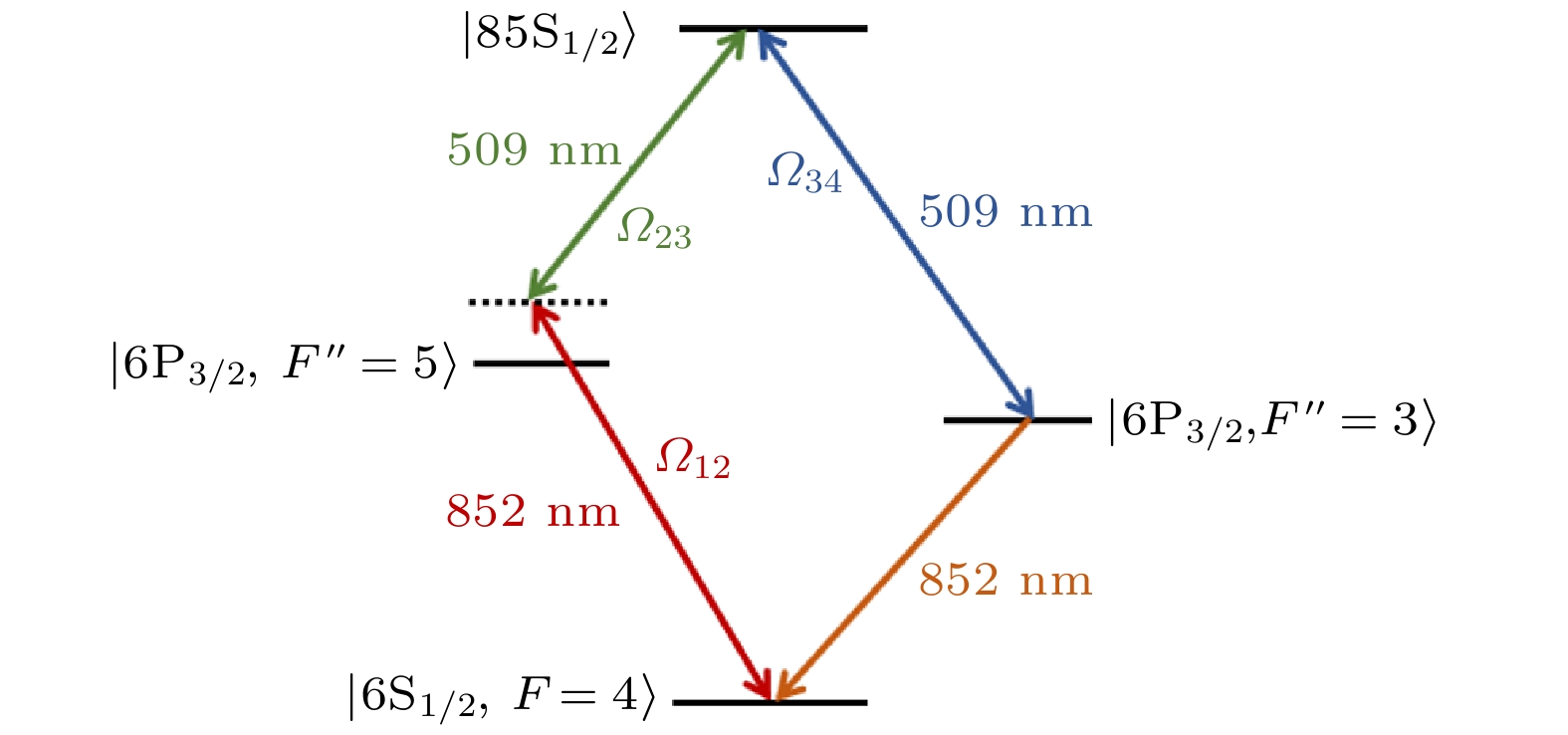
 DownLoad:
DownLoad:


